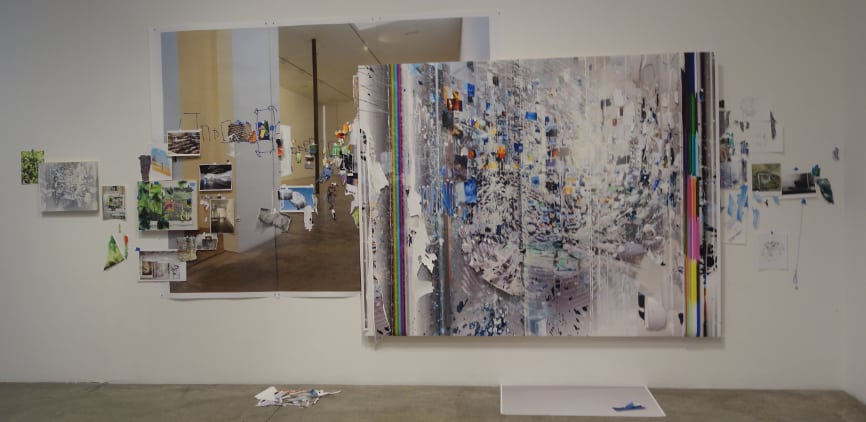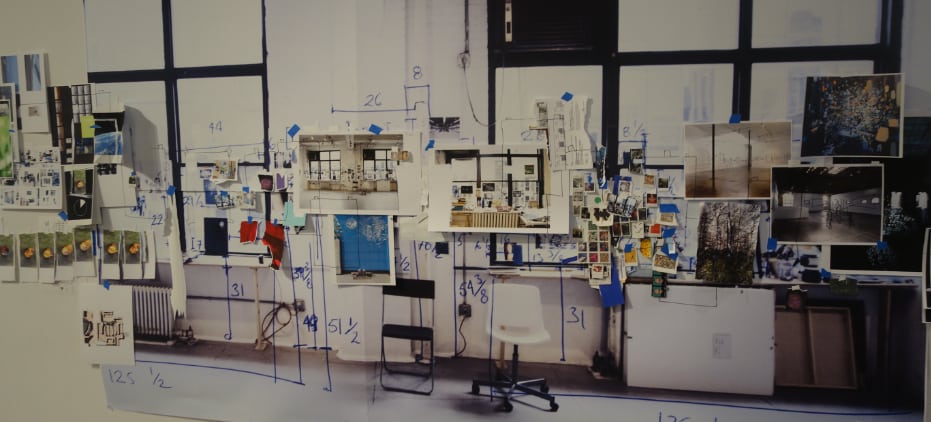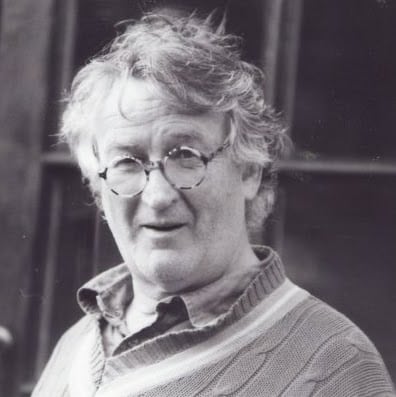[dropcap style=”font-size:100px;color:#992211;]‘”P[/dropcap]aintings are no more than flat sculpture.” Discuss.’
How Best to think of Post-Conceptualist Art?
This is the kind of examination question an undergraduate fine artist might expect in her final year. In writing up her essay, examiners might expect illumination concerning the studio project of the candidate.
The New York sculptor, Sarah Sze, has been making interventions in her own studio and recently transposed these measured, printed, drawn and painted pieces to the Victoria Miro Gallery
The pieces intrigue, if nothing else. To a final year philosophy graduate, opting for a paper in Aesthetics, the same question might aim to produce thought concerning the conditions and limits that might be sought to ground our notion of ‘medium specificity’. How, if at all, can the notion of beauty be secured in an environment within or without medium constraints?
Art Beyond Medium Specificity
One of the constraints against which Conceptualists fought to free themselves, was painting’s insistence on the flat surface. Conceptualism turned against the form that defined painting in order to seek social currency. In so doing, it rejected the strictures of painting’s medium. Those who remained in the painting studio advocated process rather than representation.
The Dissolution of Beauty
Others, those that stepped out of the painting studio, used photography, film, video, performance, installation, found objects or Readymades to invest with meaning – rather than with beauty. Abstract beauty stumbled and fell.
Conceptualism came to an end. Or did it? In an essay in the New York Times, art critic and theorist, Roberta Smith wrote of its lasting legacy,
It is now more than 20 years since the movement was seen as petering out. Its ”classic period,” in fact, seems to have been barely a decade long. In the main essay to ”Reconsidering the Object of Art: 1965-1975,” an exhibition at the Los Angeles Museum of Contemporary Art in 1995, Lucy R. Lippard, the movement’s presiding critic, wrote about it in the past tense.
But Conceptualism never really faded away, and it certainly didn’t die; it simply rose, fell and rose again by infiltrating other art forms. By now it seems virtually radioactive in its staying power and ubiquity; it is the shifting terra infirma on which nearly all contemporary art is built — and a crucial factor in the increasingly globalized art world. (Smith 1999)
Art was considered until modernity as mimetic. All the arts, of whatever discipline, strove to account for their genre-specific nature in terms of representation. Modernity, for a brief period at least, replaced the copying of nature – that which lies outside of the artist – with expression, characterized as that which is unique to the artist, being his inner world.

Sarah Sze installation at Victoria Miro Gallery
Art & Ideas
Looking back to Marcel Duchamp’s Readymades, Conceptual Art replaced the work of the artist with ideas. The artwork was no longer to be crafted but was to located in an idea the artist has and that she documents.
But what are artistic ideas and how do we recognise them?
The finest piece of thinking, collecting many of our intuitions concerning the fine arts, is provided by Immanuel Kant, in his Critique of Judgment (Kant 1987) Kant thinks that aesthetic ideas escape capture by concepts. They cannot be transcribed without remainder.
Instead they are ideas that “quicken the mind”. Thus an visual artist can make a picture that, in its representation, presents a vision of what literally cannot be seen – for instance, death, courage, love, and so on. In this the artist exhibits genius.
Greenberg & Kant
Clement Greenberg, misinterpreting Kant, focused his attention on formal beauty – what Kant called pure beauty. But Kant, in developing the idea of aesthetic ideas, wanted to establish and sustain narrative in art – the very thing Greenberg sought to free ourselves from. Narrative, for Greenberg, is nothing but a hindrance to art.
The Conceptualists strove to return social narrative to work and resisted Greenberg’s aesthetics, preferring instead, meaning. So that artists and theorists looked to language as a model. Instead of looking for beauty we were to look for significance.
The Conceptualist Legacy
That legacy remains with us, as Roberta Smith’s essay attests. However, visual fine art has brought with it an interest in ambiguity. No longer figurative, assemblages, collage, and found objects and Readymades are brought into narrative combinations where an increasingly sophisticated audience looks to project individual narratives (I shall call them undirected narratives) upon the gathering of visual material displayed.
The attention to meaning or significance has brought with it an interest in maps, logs, measurements, photographs, diagrams and instructions, amongst other meaningful visual material. Contemporary artists make diaries of their making of the work which then becomes the work.

Sarah Sze installation at Victoria Miro Gallery
Such is the highly inventive and, despite its recording of process and mapping of the studio environment, beautiful work of Sarah Sze. It is not easy to get into the work, but any difficulty is rewarded in the experience it affords of her capturing the processes of making art now.
References:
Kant I., (1987) The Critique of Judgment, trans., Werner S. Pluhar, Indianapolis: Hackett.
Smith R., (1999) ‘Conceptual Art: Over, And Yet Everywhere’ New York Times, April 25. For the full article, go to New York Times

Ed studied painting at the Slade School of Fine Art and later wrote his PhD in Philosophy at UCL. He has written extensively on the visual arts and is presently writing a book on everyday aesthetics. He is an elected member of the International Association of Art Critics (AICA). He taught at University of Westminster and at University of Kent and he continues to make art.


















